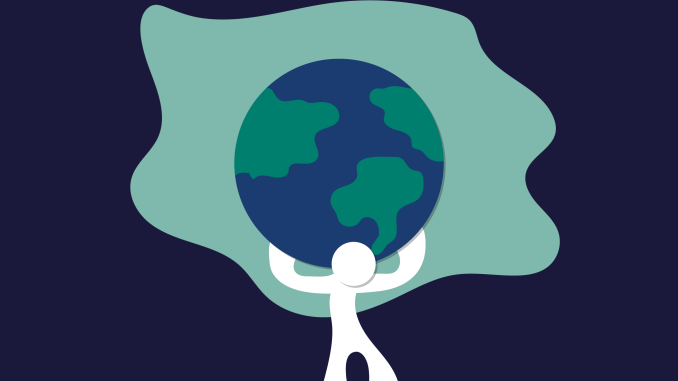
I was nine years old when I first learned about global warming. My class watched an old ‘90s video that explained what global warming is and told us we only had a certain amount of years until its consequences became unavoidable.
After the video, I had my first in-class panic attack. I rapidly started doing mental math to figure out how old the film was, and how much time we had left before it was too late. Suddenly the walls of the classroom were closing in on me, and I felt like I couldn’t breathe.
Although the video predicted we had roughly 50 years before the consequences were unavoidable, I felt like every millisecond brought me closer and closer to the end of the world.
I quickly learned that greenhouse gas emissions are the primary cause of global warming. The video stated that in 50 years, the effects of melting Arctic ice leading to rising sea levels would be irreversible and cover all coastal cities.
This video and its message have always stuck with me and created panicking thoughts when I saw litter.
In 2012, Hurricane Sandy hit the Jersey shore, and I was devastated. While I was worried about my friends and family who had been impacted by the storm, the idea of debris and pollution from the homes ripped apart sat in the back of my head.
When the news channels showed the destruction, I couldn’t stop staring at the damage and wondered how the waste and litter would harm the environment.
My school was closed for three days after the storm. For most students, this was the best thing in the world. But I sat in my room for those three days and thought about all of the things that would be sent to dumpsites or landfills and contribute to greenhouse gas emissions.
However, after intense discussions with my school’s counselor, I half-heartedly accepted that the fate of the environment did not rest on the shoulders of a 9-year-old.
But all the progress I made in accepting that solving global warming is not solely my responsibility ended when the COVID-19 pandemic began and single-use plastics were vital due to the fear that reusable plastics could carry the virus and increase transmissions. My world was surrounded by plastic bags, plastic gloves and disposable masks.
I was terrified of using plastic gloves and disposable masks because I knew how plastics harm the environment by breaking down into two greenhouse gases, methane and ethylene.
It felt like I was back in my third-grade science class and the walls were closing in on me. The fate of the planet was back on my shoulders, except I was caught in the middle of COVID-19 safety and helping the planet.
Moving to Temple University during the pandemic did not help calm my environmental anxiety. I was appalled to see the trash left on campus by students, with masks and cups strewn in bushes and on sidewalks.
As the pandemic continued, I made small shifts back to sustainable living after being forced to use more single-use plastic products in April 2020, like using reusable masks and grocery bags. I sought help from therapists for my environmental anxiety and looked for ways to help ease my stress, like knowing when to disengage from intense news about the environment.
In January, researchers found that the threshold, or breaking point, for dangerous global warming will likely be between 2027 and 2042, according to the World Economic Forum.
While learning this has not soothed my anxiety about the environment, I am slowly learning that I cannot be the only one out of 7.9 billion people who is responsible for solving climate change.


Be the first to comment